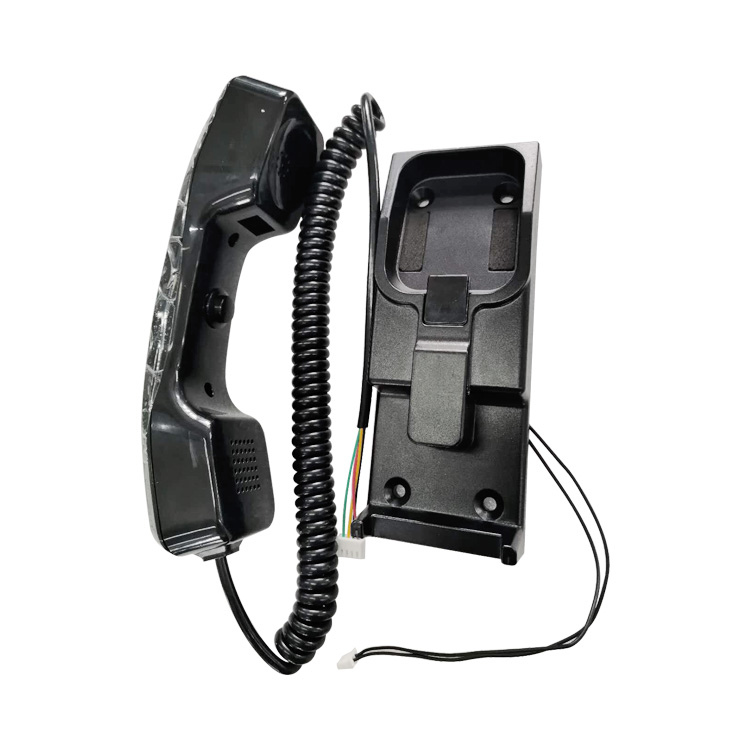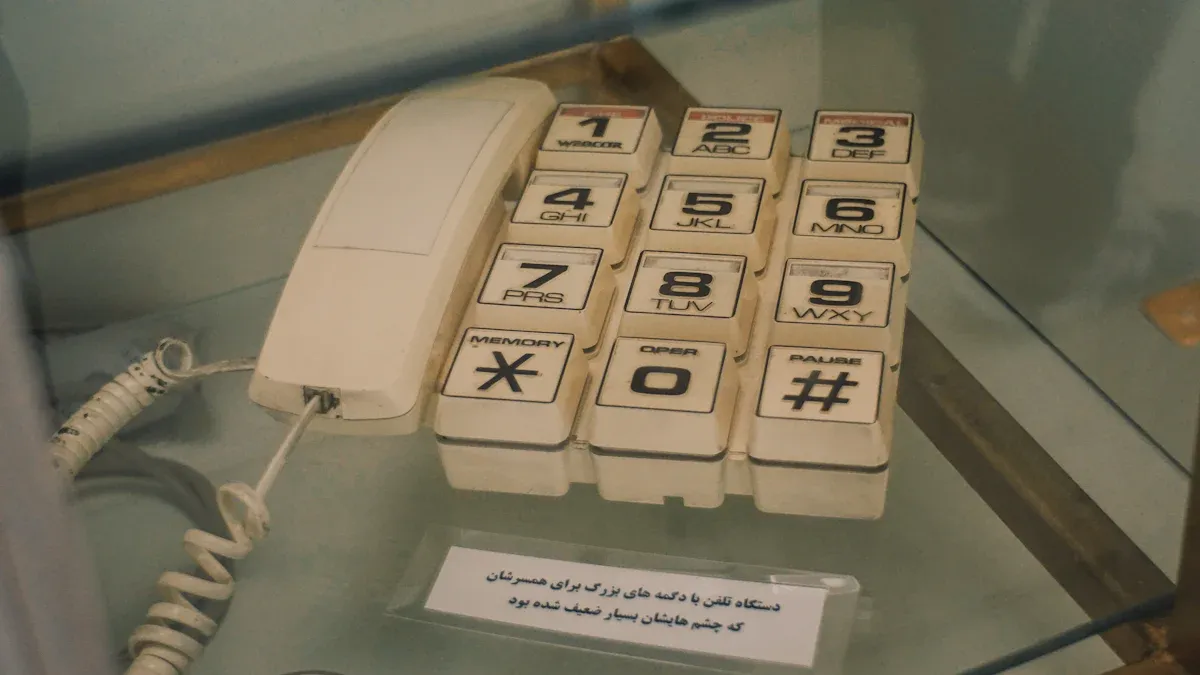
In tough industrial settings, communication can be a challenge. The industrial telephone handset rises to this occasion, enhancing reliability and efficiency. These devices withstand extreme conditions, making them essential for industries like construction and oil and gas. They ensure that teams stay connected, even in the most demanding environments.
Key Takeaways
- Industrial telephone handsets are built to endure extreme conditions, ensuring reliable communication in tough environments.
- Advanced features like VoIP and mobile applications enhance connectivity, allowing teams to collaborate effectively regardless of location.
- User-friendly designs and safety features, such as emergency buttons and weatherproofing, make these handsets essential for maintaining safety and efficiency in industrial settings.
Key Features of Industrial Telephone Handsets

Industrial telephone handsets stand out due to their unique features tailored for demanding environments. Let’s explore some of the key attributes that make these devices essential for effective communication in various industries.
Exceptional Durability
Durability is a hallmark of industrial telephone handsets. These devices undergo rigorous testing to ensure they can withstand harsh conditions. They often feature materials like aluminum, magnesium, and titanium alloys, which provide high strength and corrosion resistance. Here’s a closer look at the materials that contribute to their exceptional durability:
| Material Type | Key Properties | Durability Contributions |
|---|---|---|
| Metal | Aluminum, magnesium, titanium alloys | High strength, corrosion resistance, lightweight |
| Glass | Chemically reinforced glass (e.g., Gorilla Glass) | Scratch and impact resistance, eco-friendly |
| Plastic | Polycarbonate (PC) | High impact strength, fire resistance, environmentally friendly innovations |
| Ceramic | Yttria-stabilized zirconia | High bending strength, improved impact resistance, non-conductive |
These handsets also meet stringent durability standards. For instance, they often comply with MIL-STD-810H, which includes 29 tests covering temperature, humidity, and mechanical shocks. This ensures they perform reliably in extreme environments.
Advanced Communication Capabilities
Modern industrial telephone handsets come equipped with advanced communication technologies. They support various protocols, including VoIP, 3G, and 4G, ensuring seamless connectivity. Here are some notable features:
| Technology Type | Features |
|---|---|
| VoIP | Enables call recording, call forwarding, conferencing, and visual voicemail. |
| Mobile Applications | Transforms mobile phones into office extensions with features like chat and video calls. |
| Specialized Handsets | Includes models designed for heavy call loads and video collaboration. |
| Unified Communications | Integrates various communication tools and services for enhanced productivity. |
| Contact Center & IVR | Provides customer service through call center agents and automated voice response systems. |
These capabilities enhance communication efficiency, allowing teams to stay connected regardless of their location.
User-Friendly Design
User-friendliness is another critical aspect of industrial telephone handsets. They often feature intuitive interfaces and ergonomic designs, making them easy to operate even in challenging conditions. Many models include:
- Hands-free operation for convenience.
- Weatherproof designs to protect against the elements.
- Vandal-resistant features to ensure longevity in high-risk environments.
Additionally, these handsets often come with emergency features, such as quick dial buttons and external speakers, ensuring that help is always just a button away.
Impact on Industrial Communication
Industrial telephone handsets play a crucial role in transforming communication within various sectors. Their robust features not only enhance connectivity but also significantly impact safety, efficiency, and accessibility in challenging environments.
Enhancing Safety Protocols
Safety is paramount in industrial settings, especially where hazards abound. Industrial telephone handsets contribute to safety protocols in several ways:
- Ex-proof mobile phones are designed for use in explosive atmospheres, ensuring safety by preventing ignition risks.
- These devices withstand harsh conditions, such as gas leaks or combustible dust, which enhances safety protocols.
- Additional features like gas detection and GPS tracking provide an added layer of safety for workers.
Reliable communication systems are vital during emergencies. Employers must have an emergency communication plan to quickly reach all workers and provide instructions. Mass notification systems can deliver real-time messages and facilitate two-way communication, enhancing safety during incidents.
Boosting Operational Efficiency
Operational efficiency is essential for productivity in any industry. Industrial telephone handsets streamline communication, allowing teams to coordinate effectively. Here’s how they boost efficiency:
- They enable quick decision-making by providing instant access to information.
- Workers can communicate without delays, reducing downtime and improving workflow.
- The integration of advanced communication technologies allows for seamless collaboration across different teams.
By ensuring that everyone stays connected, these handsets help maintain a smooth operation. When teams can communicate effectively, they can respond to challenges swiftly, leading to better overall performance.
Improving Connectivity in Remote Areas
Many industries operate in remote locations where traditional communication methods fail. Rugged telephone handsets address these connectivity challenges effectively. Here’s a look at some common issues and how these devices help:
| Challenge | Description |
|---|---|
| Limited ISPs | Few rural ISPs offer slower speeds and limited service options due to outdated infrastructure. |
| High Costs | Installation and maintenance costs are high due to access difficulty and distance in rural areas. |
| Inconsistent Speeds and Reliability | Rural areas often experience inconsistent internet speeds and reliability, affecting business operations. |
Rugged devices are designed to withstand harsh environments. They ensure reliable communication for frontline workers. These devices can handle drops, dust, water, chemicals, and extreme temperatures.
For instance, a geologist working in the remote Australian Outback uses a satellite phone to communicate with their team. The phone survives dust storms, intense heat, and rough handling, continuing to function reliably throughout the project.
In another example, a professional working in the Sahara Desert shared, “We were in the middle of the Sahara Desert, and our satellite phones were the only way to stay in contact with the project managers. They worked flawlessly, even in such a remote environment.” Such reliability is crucial for maintaining operations in isolated areas.
Case Studies of Industrial Telephone Handsets
Manufacturing Sector
In the manufacturing sector, industrial telephone handsets have made a significant impact. Companies that adopted these devices reported impressive outcomes. For instance, they saw a 25-30% reduction in workplace injuries and a 15-20% improvement in worker productivity. The table below summarizes these measurable outcomes:
| Outcome | Percentage Improvement |
|---|---|
| Reduction in workplace injuries | 25–30% |
| Improvement in worker productivity | 15–20% |
| Decrease in error rates | 35–40% |
| ROI timeframe | 18–24 months |
These improvements stem from better communication and enhanced safety protocols.
Oil and Gas Industry
The oil and gas industry faces unique challenges, and rugged telephone handsets address many of them. These devices are built to withstand harsh environments, ensuring durability in extreme conditions. They come equipped with safety features, noise-canceling technology, and long-lasting batteries. Here’s a quick look at their key features:
| Feature | Description |
|---|---|
| Rugged Design | Built to withstand harsh environments, ensuring durability in extreme conditions. |
| Safety Features | Equipped with special security functions to protect workers while communicating. |
| Noise-Canceling Technology | Loudspeakers and noise-canceling microphones enable clear communication in high-noise areas. |
| Weatherproof | Designed to function in extreme weather conditions, ensuring reliability in all environments. |
| User-Friendly | Easy to use, allowing workers to communicate effectively without complications. |
| Long-lasting Batteries | Ensures that devices remain operational for extended periods, crucial for continuous communication. |
These handsets also mitigate ignition risks in flammable environments, ensuring worker safety.
Construction Sites
Construction sites often operate in unpredictable conditions. Rugged telephone handsets provide reliable communication, even in remote areas. They help teams stay connected, which is vital for project success. Here are some challenges these devices address:
- They ensure reliable communication in low-connectivity areas.
- Rugged handsets facilitate real-time data capture and reporting.
- They withstand dust, water, and rough handling, making them ideal for construction environments.
With these features, workers can focus on their tasks without worrying about communication failures.
Future Trends in Rugged Communication Devices
As industries evolve, rugged communication devices are set to embrace exciting trends that enhance their functionality and usability. Here’s a look at what the future holds.
Integration of IoT Technologies
The Internet of Things (IoT) is transforming how devices communicate. Rugged telephone handsets will soon integrate IoT technologies, allowing them to connect with various sensors and systems. This integration will enable real-time data sharing, enhancing decision-making processes. For example, a worker can receive alerts about equipment status or environmental conditions directly on their handset. This connectivity will lead to smarter operations and improved safety measures.
Advancements in Battery Life
Battery technology is advancing rapidly, and rugged handsets are benefiting from these innovations. Here are some key advancements:
| Advancement Type | Key Features | Benefits |
|---|---|---|
| Silicon Anode Batteries | – Potential tenfold increase in capacity over graphite | – Higher specific energy leading to lower costs if material costs are managed |
| – Partnership with Silicon Anode Consortium to overcome implementation barriers | ||
| Solid-State Batteries | – Replace liquid electrolytes with solid materials | – Nonflammable, improved safety, and energy densities up to 900 watts per liter |
| – Enable use of metallic lithium anodes | – Unique advantages over traditional battery types, enhancing overall performance and safety |
These advancements will ensure that rugged handsets can operate for longer periods without needing frequent recharges. This is especially crucial for workers in remote areas or those on long shifts.
Enhanced Data Security Features
As communication becomes more digital, security is a top priority. Rugged telephone handsets are incorporating advanced security features to protect sensitive information. Here’s a glimpse of some new features:
| Feature | Description |
|---|---|
| Physical camera protection | Prevents unauthorized video capture by blocking the camera physically. |
| Audio masking | Blocks audio capture to prevent eavesdropping on conversations. |
| Chip-level control of RF signals | Manages cellular, GPS, Wi-Fi, Bluetooth, and NFC connectivity to enhance security. |
| Dual-layer solution | Combines hardware protections to ensure multi-layered security against surveillance threats. |
| SafeCase | A specialized device that protects against spyware-enabled surveillance while allowing phone functionality. |
These features will help ensure that sensitive communications remain confidential, safeguarding both workers and companies from potential threats. As rugged communication devices continue to evolve, they will play a vital role in enhancing industrial operations and safety.
Rugged telephone handsets are changing the game in industrial communication. They offer reliable, efficient, and safe solutions tailored for tough environments.
Key Insights:
- The industrial sector holds the largest share of rugged phone usage, showing high demand for durability.
- 90% of rugged technology users want even more robust devices, indicating a strong future demand.
- 83% of users report improved time efficiency with these handsets.
As industries continue to evolve, the need for these devices will only grow.
FAQ
What industries benefit most from rugged telephone handsets?
Industries like construction, oil and gas, and manufacturing benefit significantly from rugged handsets due to their durability and advanced communication features.
How do rugged handsets enhance safety?
Rugged handsets improve safety by providing reliable communication in hazardous environments, enabling quick emergency responses, and integrating safety features like GPS tracking.
Are rugged telephone handsets expensive?
While rugged handsets may have a higher upfront cost, their durability and efficiency often lead to long-term savings and reduced operational downtime.

